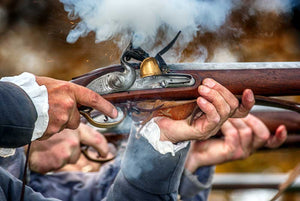Choosing the right firearm for you is as much of a personality test as any of the quizzes you might take online. Each model, as well as the gun accessories you choose and the utility for which you’re buying it, all say something about what you value and how you see the role of guns in your life.
What’s great about being a gun enthusiast though, is that when you love to shoot, every model, every caliber, is interesting and worth a shot (literally).
Can I Have Your Number?
Gun calibers are designated by number, specifically the measurement of the internal gun barrel. In America, these measurements are normally made in inches or millimeters, such as the 9mm, .22, .45, or .50 caliber handgun which sports a diameter of those 9 millimeters, 0.22 inches, and so on. Naturally, measurements differ depending on where the gun is purchased, as countries like Great Britain use the metric system.
The guns for which 45 Blast makes attachments, like their famous Canik compensator, is a 9mm caliber.
Ever since guns graduated from simple “fire sticks” which acted basically as big spears that launched shrapnel at the enemy, the gun’s caliber has been important. In the days of front-loaded, single-shot muskets, calibers would range between 0.5 and 0.8.
This didn’t necessarily mean that the balls being fired were perfectly sized for the inner barrel bore. Usually, the minutemen who made their own bullets would tend to make the ball a bit smaller to account for the other materials that would either be poured in (like gunpowder and paper cartridges) or accumulated naturally (like ash).
Using the Wrong Caliber
A gun’s caliber can be a bit deceiving for the uninitiated. Just because a barrel has a diameter wide enough for certain cartridges doesn’t mean that it’s suited for every bullet that is smaller than it. Loading in the wrong caliber could cause numerous problems.
- The gun won’t load properly.
- Bullets that are too big will cause too much firing pressure, perhaps causing the gun to explode.
- Bullets that are too small won’t have enough firing pressure, causing poor muzzle velocity.
- The wrong caliber could damage the inner bore, eventually leading to a buildup of pressure.
It’s important to pay close attention to exactly what type of caliber your firearm is; even bullets in the same “family” of caliber might not be accessible to your particular model.
For example, there are numerous .30-caliber firearms, including the .308 and the .30-06 among others, and they each take a different bullet. The caliber should be printed on the side of the gun.
The Best Attachments for the Most Popular Caliber
Regardless of the caliber that you are firing, most guns could use complimentary gun accessories to improve the overall experience of firing them. Naturally, poor muzzle velocity or unimproved gas diversion will affect the performance of the gun which can only be fixed by using the right caliber bullet and buying the best gun accessories for your barrel.
The Canik compensator, a staple of all of 45 Blast’s guns, is the flagship attachment for those who are interested in home defense and competitive shooting. As the 9mm is the most used caliber in the entire world, these accessories are becoming more accessible and more in-demand as each day passes.
Visit 45 Blast today to learn more about how your weapon’s caliber can be used to its highest potential.


